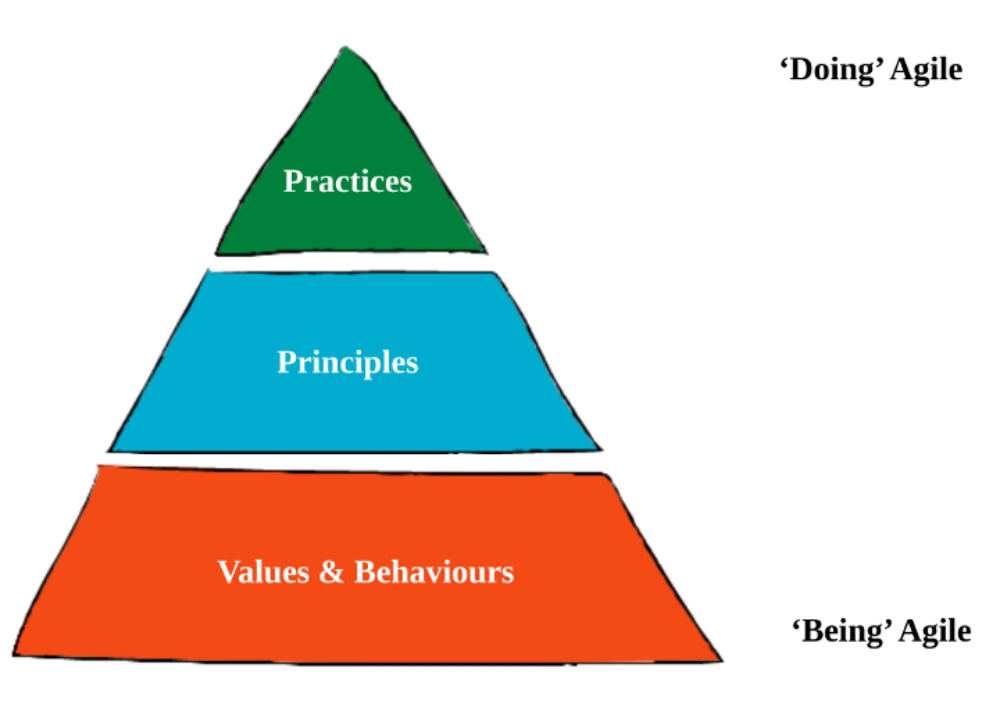Always Start with “Why?”
Image credit: Mediaan.com
Two schools of thought dominate the adoption of “Agile”. Those who haven’t yet adopted, and those who are resistant to change, focus on “doing” or “acting”. For “actors”, the change is only about the adoption of new process and practices - new ways of getting work done.
Those who have experienced the change in depth, and appreciate its benefits, focus on “being”. For “be-ers” the change is about new behaviours and culture supported by new structures. Process and practices follow on as a response to changed behaviours.
The outcomes of these approaches are radically different. Just “doing” does not make a resilient change because it is only skin-deep. Reversion starts as soon as any stress is encountered in the organisation. “Being” makes change more resilient. Reversion will still occur in times of crisis, but there are more deeply engrained changes that allow the organisation to rebuild the change.
image credit: Sainsburys Digital and Technology
The Agile Pyramid
When Sainsburys Digital and Technology set out to change radically, we centred change on an agreed set of Principles. This is a good fulcrum for change. Adopting new principles starts changing the values and mindset. It gives the organisation an anchor point to focus on in times of stress and to return to when parts of the organisation suffer reversion.
We used a simplified version of the Agile Onion in the form of a pyramid. The nice thing about the pyramid is that it reflects how foundational each tier is. If you like, the width of each tier shows the impact of change engendered by focusing on each tier. The width of each tier also represents the effort that must be applied to make a change in that tier.
Image Credit: Ahmed Sidky, from cprime.com
Why Describe the Agile Mindset?
Our target is an ambitious one – to describe what it means to have “an agile mind”. We have found no coherent source that describes the agile mindset in a comprehensive way. This wiki is an attempt to rectify that lack.
To structure our thinking – and this site – we have followed the example set by Ahmed Sidky. Sidky bases his view on the Agile Manifesto. We take the view that there is much more to care about than the values and principles espoused there. We can also provide a much more comprehensive view than simply focusing on the headlines found in the manifesto.
anAgileMind will be a hub that combines many sources of information so that by reading, by learning, by practicing you can grow your Agile Mind; you can become agile.




Our assertion is that the Agile Funnel implies a model of change. The funnel is a static model reflecting content and relationships. We need a more dynamic view of the model to understand how our Principles can act as the fulcrum of change for our Values and Behaviours.